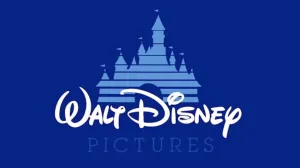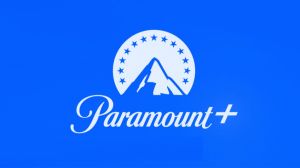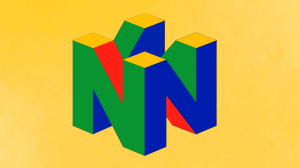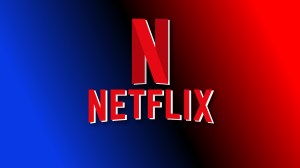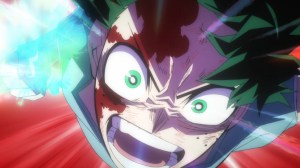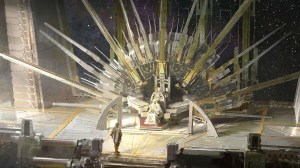Rob Legato could certainly rest on his career laurels: after establishing himself with his ability to provide feature film-quality visual effects on the various “Star Trek” television series, he moved into film and instantly established himself as one of the most innovative visual effects supervisors in Hollywood with his jaw-dropping work on such movies as director Ron Howard’s “Apollo 13,” several of director Martin Scorcese’s films including “The Aviator” and “Hugo,” and James Cameron’s brilliantly immersive “Titanic” and “Avatar.”
Videos by ComicBook.com
Three decades into his career, Legato continues to push the boundaries of imaginative, evocative storytelling, shattering expectations with photorealistic productions like “The Jungle Book” and now “The Lion King,” in which he, director Jon Favreau and an accomplished team of traditional filmmakers collaborated within a digitally created environment, experimenting with new technologies that allowed them to apply all of their combined years of experience on physical sets.
ComicBook.com caught up with Legato on the minimalist practical set of the new “Lion King” film, where he explained how he and his colleagues were inventing a new kind of filmmaking that he hoped would soon be just another way of putting movies together.
On the behind the scenes visual effects evolution that led to “The Lion King”:
Rob Legato: “The Jungle Book” thing was on train to doing photorealistic live-action-looking films that use this sort of technology, that you can create something that otherwise seems like you could do it but you really can’t. You could really shoot in a jungle, you could really bring a kid there, but it’s really difficult and arduous, and we wouldn’t necessarily get what we got.
So that idea now extended into another thing I think we proved that you could make something that looks photorealistic. And even though the animals are doing something extraordinary by talking, it’s not that extraordinary: a parrot talks, you know — an animal does talk. You can make this movie and extend the art form of movies as to the craft of making a beautifully shot film, a David Lean aspect film with these creatures.
And then if you suspend this belief enough, you’ll just watch the story and enjoy the backgrounds and the journey, the epic journey of going to Africa and tell it in a way that seems authentic. And maybe more authentic than we could ever have achieved in any kind of a [live-action] form. So that was the challenge of doing that. And automatically the [source] material is working. It’s tried and true. You can make a good movie out of this.
On the experimental, trial-and-error aspect of an untired visual effects technique:
You can get to that portion of photorealism with creatures that you have seen in documentaries and zoos and various other things, that you can see them up close and then kind of confuse the eyes that was fake. And we also tried not to make it, in that particular movie, have any kind of human characteristics. It could only do what it really is built to do. And so that test was like we can do this and now we want to improve the art form.
Because it’s the first time you do anything, you are just happy to get anything to work. And then now that you can, know you can get it to work it’s now you want to extend the cinema of it….The idea of how we’ve had some many years’ experience doing analog movies that feel like movies, that feel like David Lean films or things that inspired you to even be a movie maker, that you can now apply all of those years of experience to something that is seemingly very technical.
But when you break it down like we have, you can just walk on the set and grab a camera and start shooting. And the composition will be great, the eventual lighting will be great. You know that you’ll get there with the animals and the landscape and all of that stuff. Now you just have to choose the right ones, pick the best locations, pick the best time of day, just like you would in a regular movie.
On bringing long-standing filmmaking processes into a virtual reality set:
Even though it’s not real to your eye, the sensation of three dimensions of standing on a cliff makes you kind of a little nervous to look down. If you get a little vertigo you’ll still get vertigo. If an animal comes close to you you’ll back up. So you’re able to tap into what you would have done in a real situation even though it’s a faux version of a real situation. So you get to impart more of your personality, based on the input that you get. My problem with doing visual effects from the beginning is it’s so impersonal and it’s such a long process that you don’t get an emotional reaction for something you do on a stage. “You had a piece of light over there. We didn’t mean to do it, but it fell over there and let’s take advantage,” and now you can build on that idea.
You just don’t get that in environment unless you do something like we’re doing where move the light around. It’s like “Oh, that’s great. Forget what I thought I was going to do – this is now much cooler. Let me do that.” And then you build on top of that and then you build on top of that, and all of a sudden you’re off to the races making something that you otherwise could never have made without live input, without the ability to change. One of the great gifts of doing it is simply saying “I don’t know how I want to shoot it. I don’t know what’s going to leap out. I wish I did.”
Normally you storyboard visual effects out or somebody storyboards it out and you’ll assemble it and say “Yeah, I guess that’s pretty good.” But you don’t have the definitive, because you need this to actually plan it out. Here you can go be an open channel and walk around and go, “This is a much cooler idea then I was going to do. Let’s put the animals over here or the actors or whatever your new situation is.” And all of a sudden it starts to be like what I would do.
On how the collaborative nature of a traditional movie set carried over into digital productions shot “The Lion King” way:
Something about the chemistry of all of us either doing all our jobs exactly right or one of us doing one of it wrong and then discovering the next thing and we’ll do 10, 12, 15 takes. And we’ll come up with, like “That’s a cool idea.” If anybody’s ever directed anything before you know you set up a big dolly shot. The first three takes are terrible. And it’s like, it doesn’t work. It’s kind of stagy. And then all of a sudden take five or six, all of a sudden you go, that goes in the movie: “That’s a movie shot. That’s a cinema shot.”
So it takes that kind of moving stuff around and rubbing off on various people in an analog way to create that. And that’s what that gives you [something] in a way that hasn’t been really done before, or done as well or as easy…That discovery is what we are looking for and know from experience that we can turn that into, hopefully, something that’s good by using all our applied arts that we have, compositional, lighting, staging and directing, all that stuff. So each shot is going to be found that way.
On avoiding achieving too much perfection:
We don’t want to fix it too much. In live-action you try to make it perfect. You can’t. In CG it’s perfect and you don’t want it. Now you could choose to say, “Well, why would you not do that?” And there were people in other studios who say, “Well, why would you go through the great expense to have everything under your control and then take your control away on purpose? What’s the point?” It’s like, “Well, s the point is that it’s really the artist’s idea between Jon and myself, and we were wanting to make a movie that looks like a film but uses this sort of methodology of doing it.
One the vast potential uses of the technique:
It’s really the idea that you could make anything using this technology which could be with actors. Certainly that’s a byproduct that you know it made it more obvious to do it this way. But you can make “The Godfather” again. You could make a David Lean movie again and not look like a Marvel movie extravaganza that you don’t believe it.
On hoping that what began as a groundbreaking technique becomes another routine tool in any filmmaker’s toolkit:
My viewpoint is it’s not a visual effect anymore if it’s just moviemaking. If you just look at it and you don’t pay attention to it or you don’t go, “God, what great visual effects…” It’s like “Well, it’s just a movie.” I mean, you don’t say that about “The Godfather.” When you see it, it’s like “Oh, great costumes, great sets, interesting light.” You just watch the film. So you don’t really pick apart one of the disciplines, you just enjoy it.
And what we’re hoping to do in this movie that we started on “Jungle Book” is that, why is it even called a visual effect if you just watch the movie and it looks like a movie? It’s no less artificial than any other discipline that we make. And my point of view is we don’t re-create something real-life or that’s authentic, it’s movie-authentic. It’s cinema you know? We stage people in a way that makes it interesting for that particular camera. We’re not really capturing real life, we’re capturing movie life…Our hope for you that you suspend this belief and you just go off on the journey.
Check out Disney’s The Lion King, in theaters now.

